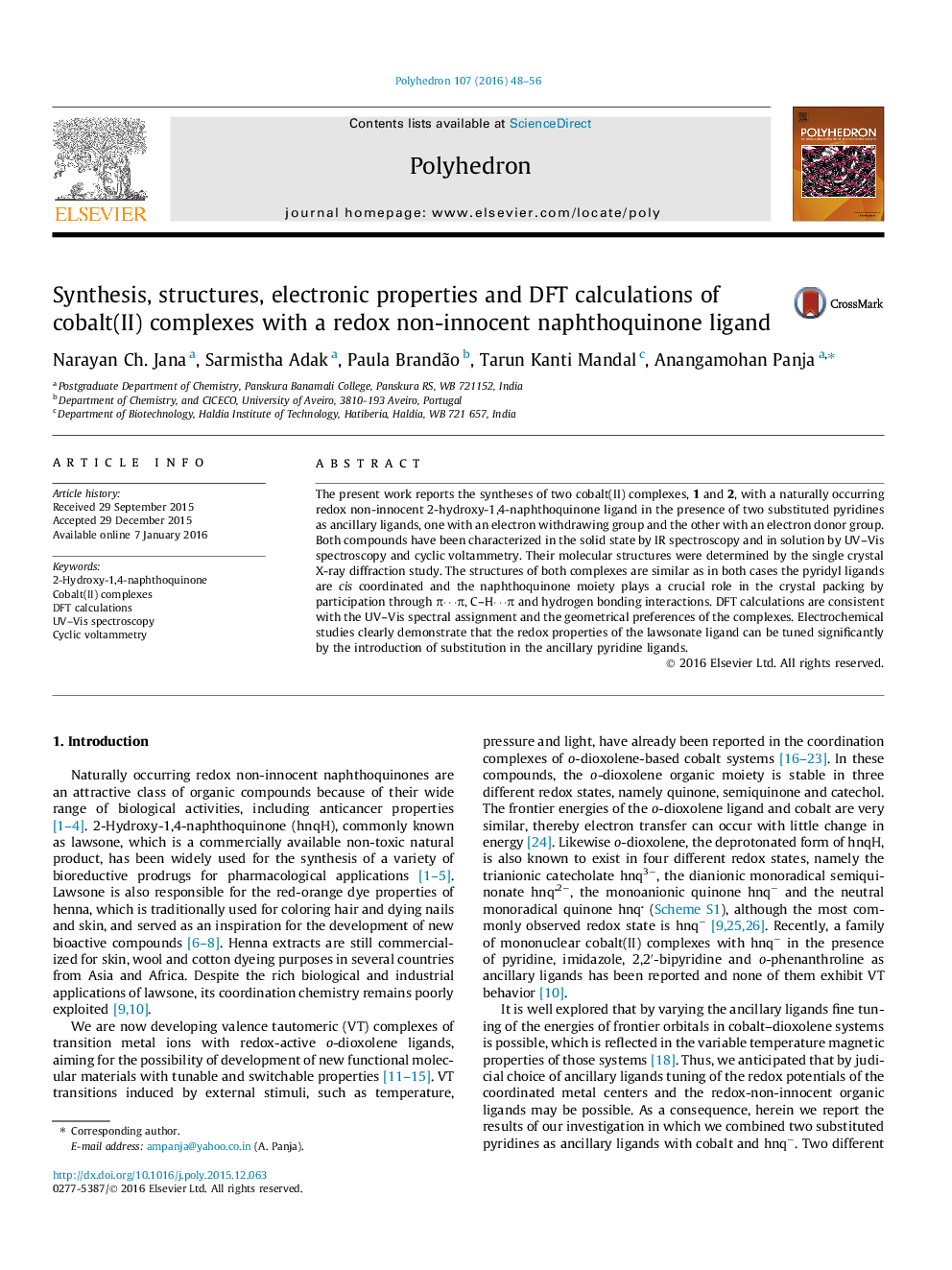| کد مقاله | کد نشریه | سال انتشار | مقاله انگلیسی | نسخه تمام متن |
|---|---|---|---|---|
| 1335689 | 1500233 | 2016 | 9 صفحه PDF | دانلود رایگان |

The present work reports the syntheses of two cobalt(II) complexes, 1 and 2, with a naturally occurring redox non-innocent 2-hydroxy-1,4-naphthoquinone ligand in the presence of two substituted pyridines as ancillary ligands, one with an electron withdrawing group and the other with an electron donor group. Both compounds have been characterized in the solid state by IR spectroscopy and in solution by UV–Vis spectroscopy and cyclic voltammetry. Their molecular structures were determined by the single crystal X-ray diffraction study. The structures of both complexes are similar as in both cases the pyridyl ligands are cis coordinated and the naphthoquinone moiety plays a crucial role in the crystal packing by participation through π⋯π, C–H⋯π and hydrogen bonding interactions. DFT calculations are consistent with the UV–Vis spectral assignment and the geometrical preferences of the complexes. Electrochemical studies clearly demonstrate that the redox properties of the lawsonate ligand can be tuned significantly by the introduction of substitution in the ancillary pyridine ligands.
The syntheses and crystal structures of the cis isomers of two cobalt(II) complexes with the naturally occurring redox non-innocent 2-hydroxy-1,4-naphthoquinone ligand in the presence of two substituted pyridines as ancillary ligands, one with an electron withdrawing group and the other with an electron donor group, are presented. The crystal packing is stabilized by several non-covalent interactions. The redox property of the lawsonate ligand can be tuned significantly by the introduction of substitution in the ancillary pyridine ligands.Figure optionsDownload as PowerPoint slide
Journal: Polyhedron - Volume 107, 9 March 2016, Pages 48–56